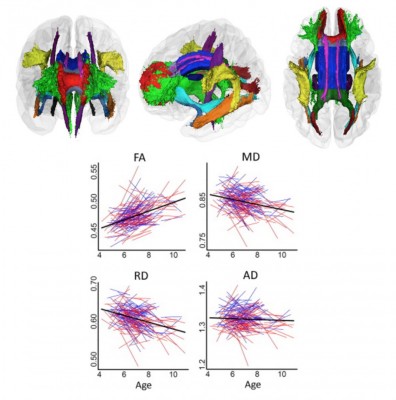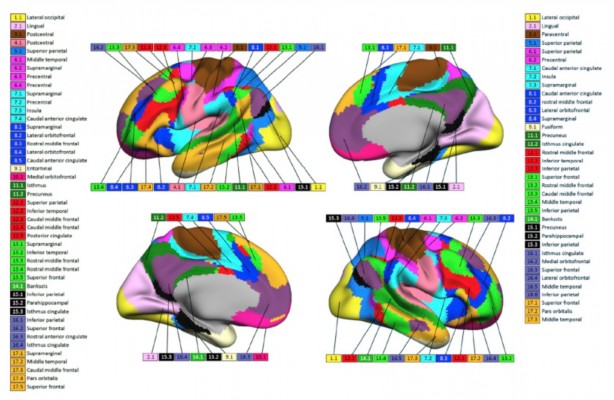Development of white matter tracts in children

LCBC has just published a new research paper in the journal NeuroImage. The paper uses diffusion tensor imaging – a measure of the extent of diffusion of water molecules across the brain which links with the extent of neuronal myelination – to investigate the development of the brain’s white matter tracts in children aged between 4 and 11 years across two scan intervals. Linear patterns of white matter tract development were observed globally across the brain between scan intervals, with greater changes observed in later-maturing frontal brain regions.
Citation
Krogsrud, S. K., Fjell, A. M., Tamnes, C. K., Grydeland, H., Mork, L., Due-Tønnessen, P., … & Walhovd, K. B. (2015). Changes in white matter microstructure in the developing brain-a longitudinal diffusion tensor imaging study of children from 4 to 11 years of age. NeuroImage.

